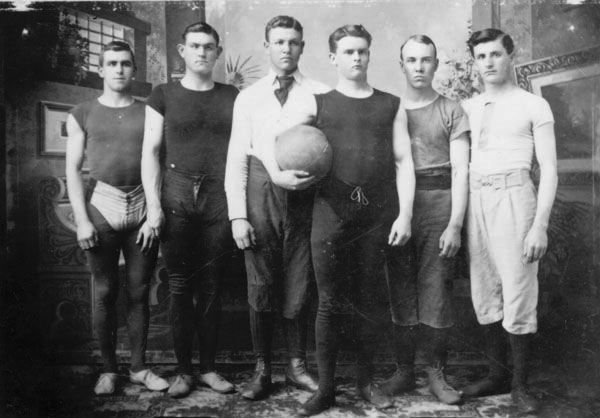History of Basketball
The history of basketball finds it way back to the year 1891. It was a Canadian physical education instructor by the name of James Naismith who introduced the game of basketball to the world. He was born in Ontario and taught physical education at McGill University and Springfield College in Springfield, Massachusetts. James Naismith, during his stint with Springfield College, a YMCA training school during that time, invented the indoor sport with able support and guidance from the American phys-ed specialist Luther Hasley.
The game commenced with 18 men at Springfield College in Massachusetts. Naismith was given a deadline of 14 days to create an indoor game that would provide “an athletic distraction” (in the words of Hasley) to the nasty and disorderly class. It was a tough call for Naismith, who had to exercise a lot of patience and infuse positive enthusiasm into the minds of his students to engage in an outdoor game that was to be played indoors in the best way possible. He recalled a game he used to play as a child and improvised on its concept.
Naismith was instrumental in laying down 13 rules for the basketball game. The rules stated that the ball should be thrown in any direction with one or both hands. He made it clear that a person could not run with the ball. The player should throw it from the place from which he caught the ball in the first place. Players had to refrain from using the fist when handling or batting the ball. He had termed shouldering, holding, tripping, pushing or striking in any way of an opponent as a foul in the first instance. If things of this nature happened the second time, the person who caused the infringement of the rule would be disqualified or would not be substituted at all. If any side made three consecutive fouls, it was to be counted as a goal for the opposing side.
Naismith also made it clear that if the ball went out of bounds, it had to be thrown into the field of play by the person touching it. This player had the right to hold the ball for only five seconds. If held longer, the chance to throw went to the opposing side. He gave special importance to the umpire who had to judge the player and report to the referee when players made three consecutive fouls. He defined the time period of the game as being comprised of two fifteen-minute halves with fifteen minutes breaks in between. Naismith concluded that the side making the most goals was to be termed as winner.
http://www.nbaboards.net/index.php?showtopic=7989


http://www.wichitaphotos.org/searchresults.asp?txtinput=Wichita-Sedgwick+County+Historical+Museum&offset=50

http://downloadsoftwarestore.com/software/subcategory/62/24
http://www.nbaboards.net/index.php?showtopic=7989


http://www.wichitaphotos.org/searchresults.asp?txtinput=Wichita-Sedgwick+County+Historical+Museum&offset=50

http://downloadsoftwarestore.com/software/subcategory/62/24
Gross! look at their short shorts!
ReplyDelete